Vegan basbousa is a delightful Middle Eastern semolina cake soaked in sugar syrup, boasting a sweet and floral taste. The top layer is golden and crunchy, while the inside remains a soft, fluffy, and pale yellow.
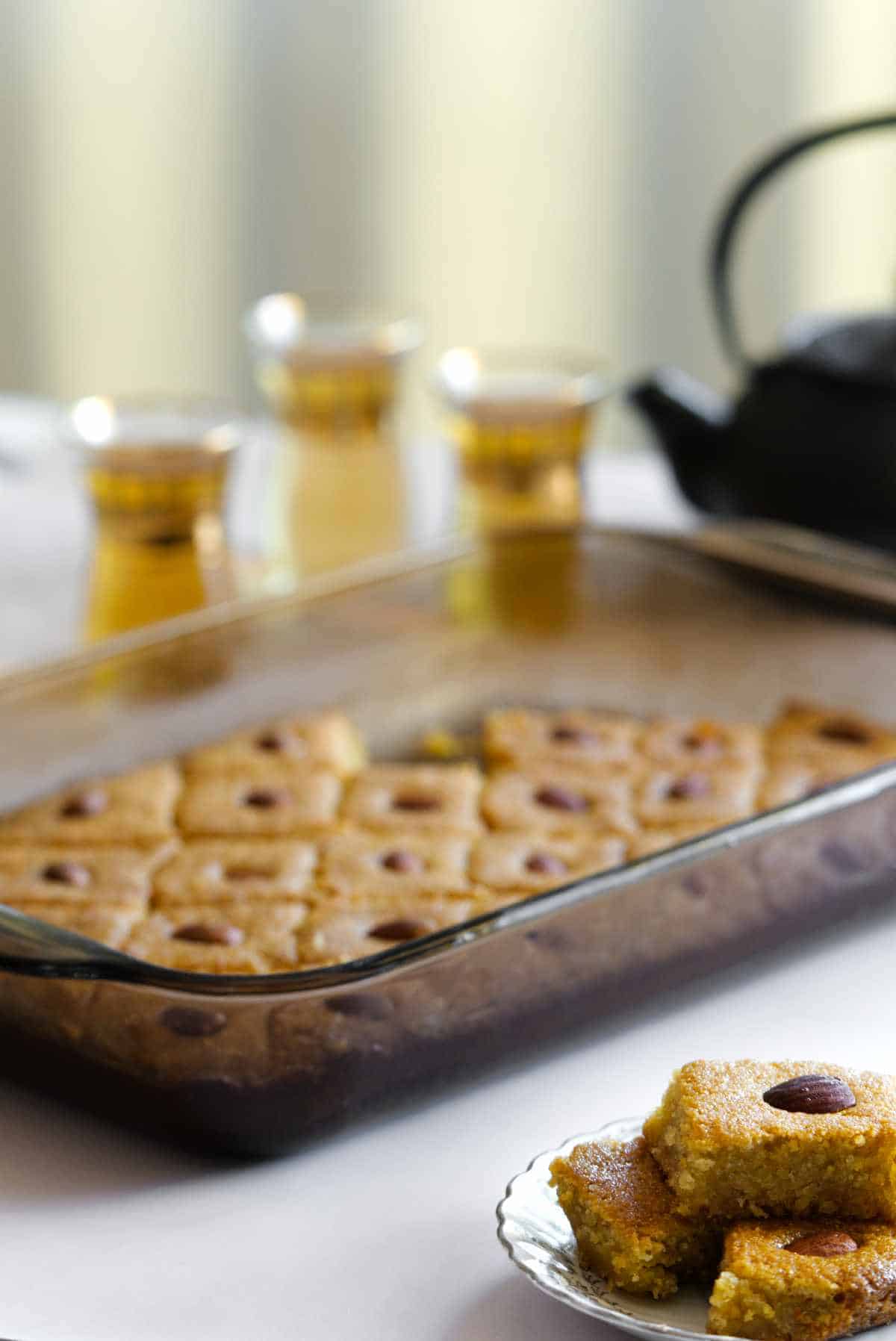
What is Basbousa?
Basbousa is a decadent Middle Eastern semolina cake sans regular flour and is drizzled in simple syrup known as atter.
It is also referred to as Harissa or namoura. It is a traditional dessert with a rich history. Believed to have originated in the Middle East (especially popular in Egypt, Syria, Turkey, Greece and Lebanon) and has been enjoyed for centuries.
Different regions will call this cake different names, my Lebanese family calls it either harissa or namoura. It is not the same as this Lebanese cake which is bright yellow and also uses semolina.
This a vegan basbousa recipe, and my favorite parts are the cake edges, they are extra caramelized and crunchy.
Ingredients and Variations
Here are notes on some of the ingredients, the complete list with measurements, can be found in the full recipe card below.
White sugar yields the best results (brown sugar will not turn out the same).
Rosewater for flavoring, you can substitute this with orange blossom water. I always use a good-quality brand such as Cortas, which I also use in my Lebanese vegan milk pudding.
Dairy-free butter - traditionally full-fat butter is used, however, any type of dairy-free butter works just as well. No one ever notices the difference!
Coarse semolina is preferred as it makes namoura less dense, however, you can use fine semolina too, or perhaps even mix both evenly. Semolina is known as ‘smeed’ in Arabic and gives a wonderful crunchy grainy texture, it features in a few different Middle Eastern desserts, such as atayef which are dessert pancakes.
Bicarbonate soda and baking powder are important, these help to leaven this Middle Eastern semolina cake.
Coconut yogurt replaces full-fat yogurt, you can use any dairy-free yogurt. I like using coconut yogurt as the flavor pairs so well with this cake some people like to add coconut to it.
Variation: Add ½ a cup of desiccated coconut when adding all other ingredients to the dough.
Pro Tips
My mother’s hot tip is to make the dough the night before, explaining that it produces a less dense cake. So the more resting time, the better.
When using tahini, there is a top layer of oil in the jar, take the top layer with the tahini to brush the baking tray. This prevents the cake from sticking and adds a hint of nuttiness.
If you prefer not to use dairy-free butter in the simple syrup, you can skip it. However, this step gives the vegan namoura a beautiful sheen.
Once the semolina cake cools down, recut it to remove the pieces.
Looking for more vegan Lebanese desserts? Here’s a list with many delicious options.
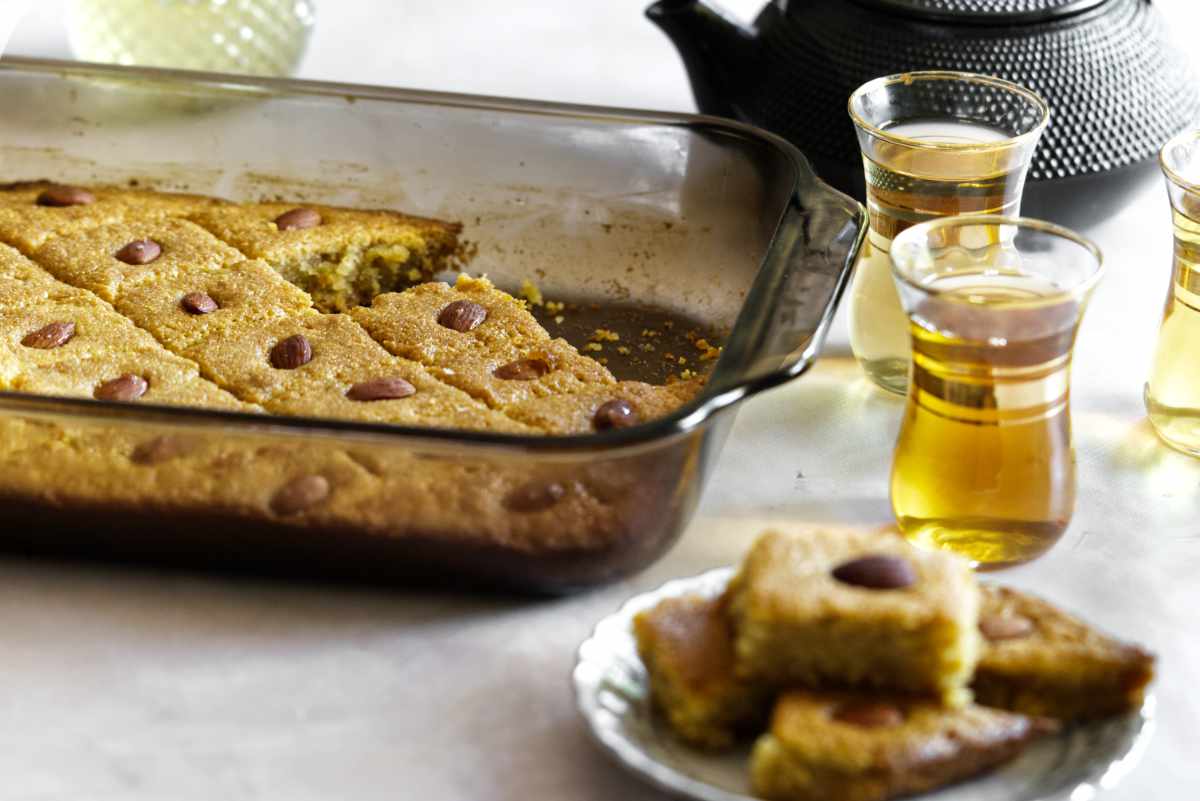
FAQ
Basbousa can be stored in a snap-lock container in a cool pantry for several days. Or covered in the fridge. Ensure that it is fully cooled to room temperature before storing.
Both methods are equally delicious and depend on your preference. Using a smaller tray will yield a softer, cake-like result, as the batter isn’t spread out and will stay moist. For a crunchier namoura, use a larger tray to allow the batter to spread thinner, about an inch (2.5 cm).
No. Namoura is not gluten free as it contains semolina which is made out of wheat.
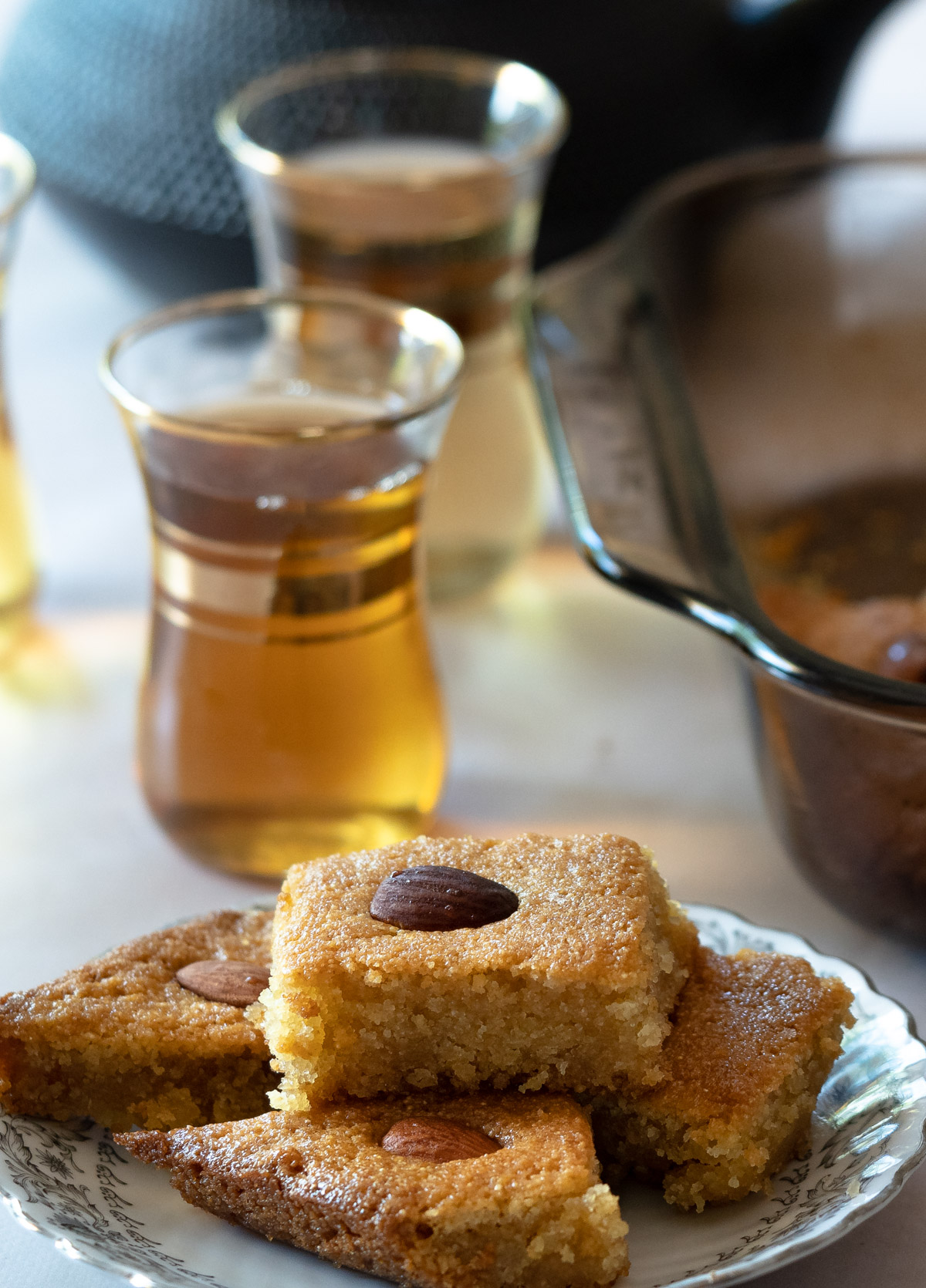
Did you make this? I'd love to know! Leave me a comment below with a ★★★★★ star rating or tag @plantbasedfolk on social media.
Recipe
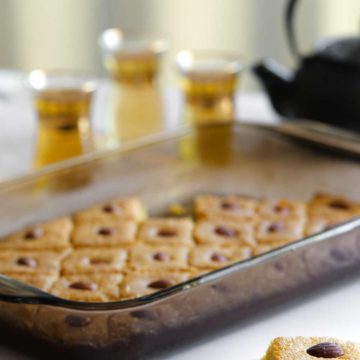
Vegan Basbousa
Ingredients
Sugar Syrup (Atter)
- 2 cups White sugar
- 1 cup Water
- 2 tablespoon Rose water substitute with orange water
- ½ tbsp Dairy free butter
Namoura
- 3 cups Coarse semolina
- 1 cup Dairy free butter room temperature
- 1 tablespoon Rose water substitute with orange water
- 1 teaspoon Bicarbonate soda
- 1 pinch Salt
- 1½ teaspoon Baking powder
- 1 cup Coconut yogurt
- ½ cup White sugar
- 1 teaspoon Tahini
- 30 Almonds
Instructions
Sugar Syrup (Atter)
- In a saucepan, add water, sugar, dairy free butter and rose water, stir through and bring to the boil for about 6 minutes. Set aside to cool down to room temp.2 cups White sugar, 1 cup Water, 2 tablespoon Rose water, ½ tablespoon Dairy free butter
Basbousa
- In a large mixing bowl add semolina and dairy free butter, combine well using hands until a dough forms. Cover with cling wrap and set aside for a minimum of 30 minutes. Once dough has rested, crumble dough using your fingers and add sugar, rose water, bicarb soda, baking powder, salt, coconut yoghurt and combine using your fingers. See notes below about using your fingers.3 cups Coarse semolina, 1 cup Dairy free butter
- Coat baking tray 22cm (9") x 33cm (13") with tahini and flatten dough as evenly as possible. Use a wet knife to push the edges down and off the tray and then cut into squares or diamond pieces and place one almond in the middle of each piece.1 teaspoon Tahini
- Bake in a preheated oven at 180°C (356°F). Place the tray in the middle of the oven for the first 15 minutes, then move it to the top for the last 15 minutes. The total baking time is approximately 30 minutes or until lightly golden.Evenly pour a generous amount of sugar syrup over the baked namoura. Allow it to cool to room temperature before re-cutting and removing the pieces.
Video
Notes
Nutrition
N.B., nutrition info is an estimate based on an online nutrition calculator. This will vary based on the specific ingredients you use.
If you enjoyed this recipe, consider supporting my work for the cost of a cup of coffee.

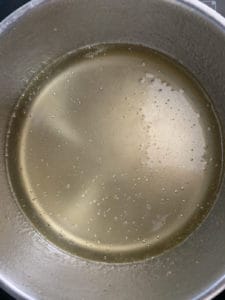
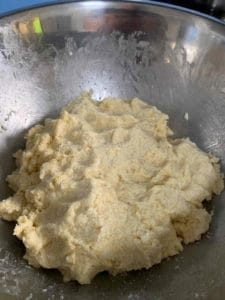
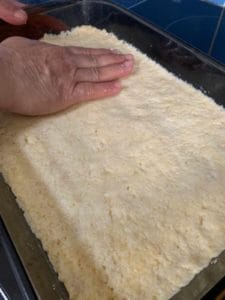


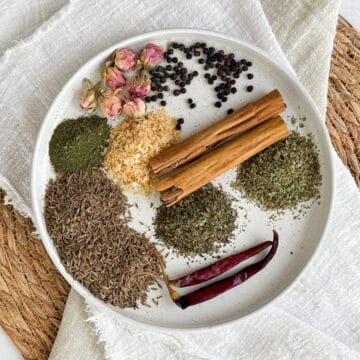
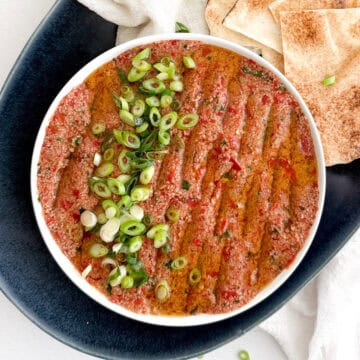
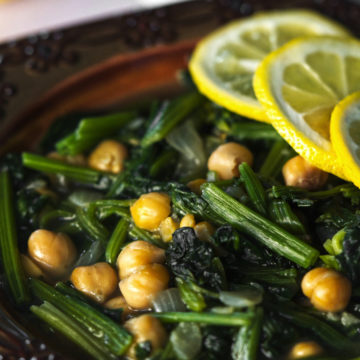
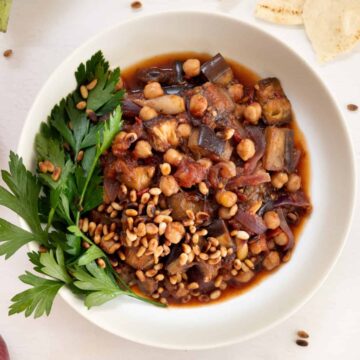
phil
I tried the recipe and it turned out great! Everyone agreed it was not too sweet, which was surprising considering the syrup. However, there seems to be a mistake in the metric version - 1 cup of yoghurt is around 250 grams!
Janelle Hama
glad you liked it. will fix the measurement accordingly, thanks for picking that up!
Toni
This is such a nice dessert!! I love it!
Nora
This Namoura is really tasty! A must try!
Jerika
Wow! Super moist and unique cake. Thanks!:)
Agnieszka
Such a great recipe! Will make it again.
Amy Liu Dong
Wow! So delicious. The color it gives plus the almond on top makes this so enticing and tempting.
Maya
Love that this is vegan friendly!
Louise
Yogurt is not vegan.
Janelle Hama
In this case it is. We only use coconut yoghurt
Maggie
This is insanely, incredibly good. Yummy!
Jacqui
Hi there,
Am loving the look of this vegan basbousa recipe. Would you please tell me what size baking pan you would recommend?
Janelle
Hi Jacqui,
The baking tray used for this vegan namoura is 22cm (8.6") x 33cm (13").
Enjoy!
Fay
I love the taste of this semolina cake. I didn't add too much sugar syrup which made it lighter.